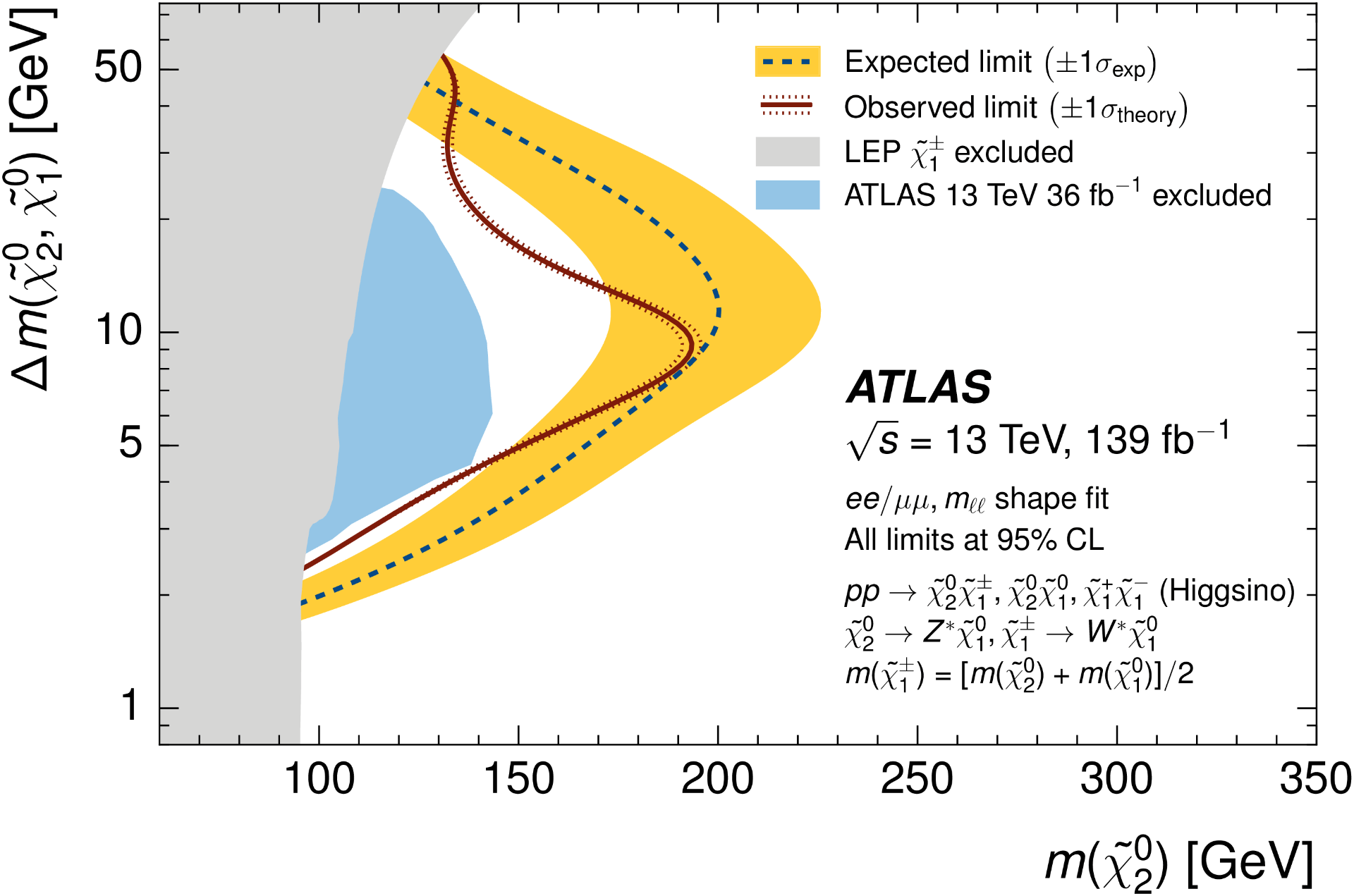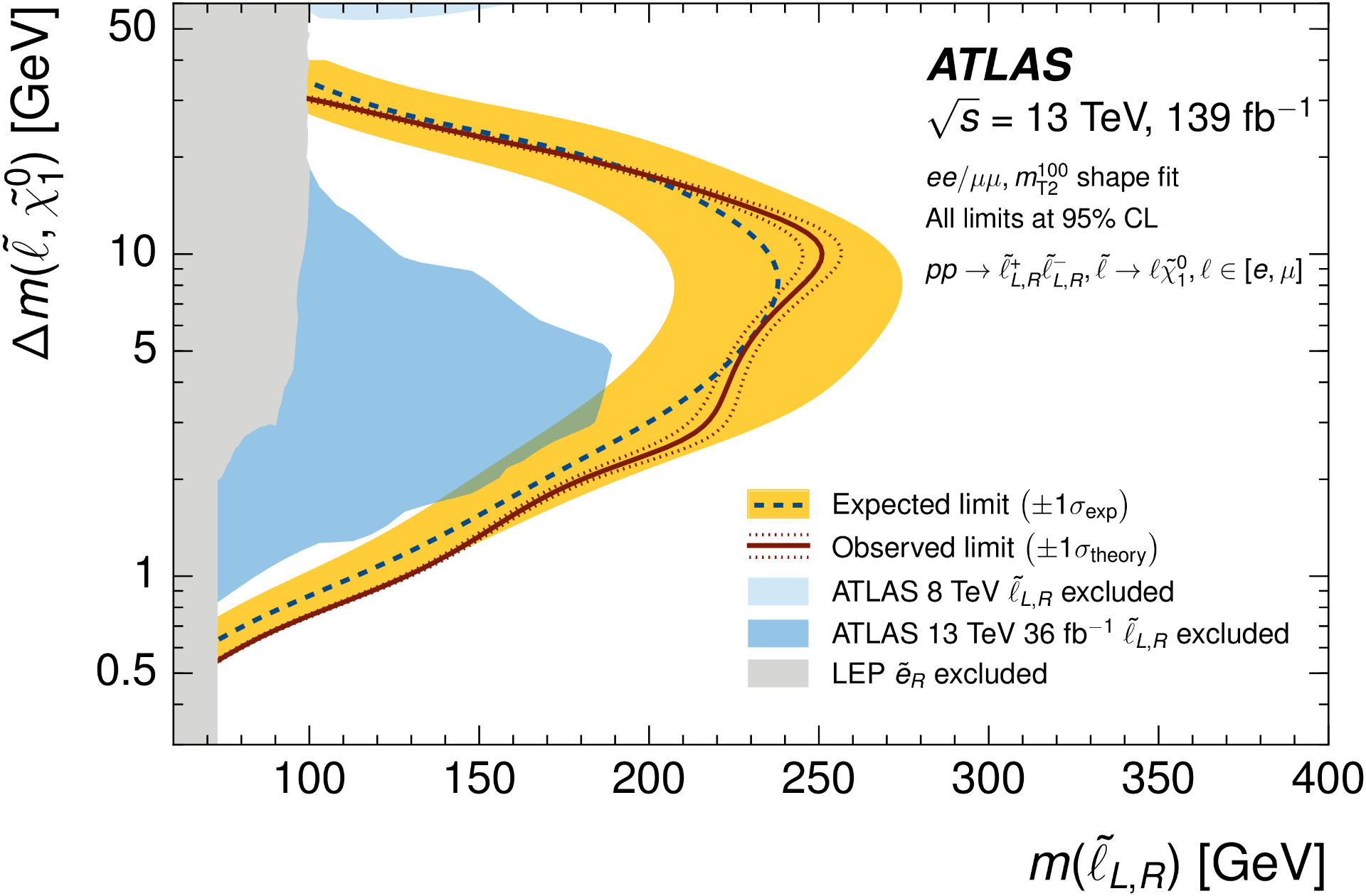SEARCHING FOR ELECTROWEAK SUSY WITH COMPRESSED MASS SPECTRA
Motivation
Supersymmetry (SUSY) is a highly attractive extension of the Standard Model (SM) that doubles the number of fundamental particles in the theory. Specifically, SUSY predicts that every fermion (boson) in the SM has a bosonic (fermionic) “super partner” that otherwise has the same quantum numbers. In doing so, SUSY has the potential to solve several open problems in particle physics: it explains why the Higgs boson has a mass at the weak scale in a natural way, unifies the gauge couplings at high energy, and (assuming R-parity conservation) provides a candidate for dark matter with a mass that is consistent with the observed dark matter density in the universe.
While the production cross-sections at the LHC for strongly-interacting SUSY particles are several orders of magnitude larger than those produced through electroweak processes, no experimental evidence of the former has yet been found. Indeed, it could be the case these strongly-interacting particles are too heavy to be produced at the LHC, in which electroweak SUSY may be key to discovery. Of particular interest within electroweak SUSY are scenarios in which the lightest Supersymmetric particle (LSP), χ̃01, is nearly mass-degenerate with another SUSY particle. These “compressed” scenarios are motivated by naturalness arguments for higgsino-like electroweakinos and by dark matter density observations in the case of a bino-like LSP. Sleptons that are nearly mass-degenerate with a bino-like LSP can also give rise to the correct thermal-relic dark matter density and potentially explain the observed muon g − 2 anomaly.
ATLAS search for compressed electroweak SUSY
SUSY with a compressed mass spectrum leads to extremely challenging experimental signatures at the LHC, as the particles in the final state tend to have very low transverse momentum. In the collider physics community, we describe such low-momentum particles as being “soft”. Assuming R-parity conservation, these leading order compressed electroweak SUSY processes will lead to events containing very soft leptons and missing transverse energy, which are extremely difficult to reconstruct and trigger on. Instead, we require additional hadronic activity from initial-state radiation or vector-boson fusion to boost the SUSY system in transverse plane. This boost increases the transverse momentum of the final state particles and allows for triggering on the missing transverse energy. To maximize the sensitivity to very compressed signals, the analysis uses the softest electrons and muons available in ATLAS. Understanding the fake/non-prompt lepton background in this regime is therefore a crucial aspect of the search.
This analysis uses the di-lepton invariant mass (mℓℓ) and the “stransverse” mass (mT2) as the final discriminating variables to search for electroweakinos and sleptons, respectively. In each case, these variables are kinematically bound by the mass-splitting for signal processes. In the absence of any statistically significant excess, shape-fits are performed these variables to set model-dependent limits on the electroweakino and slepton masses.


